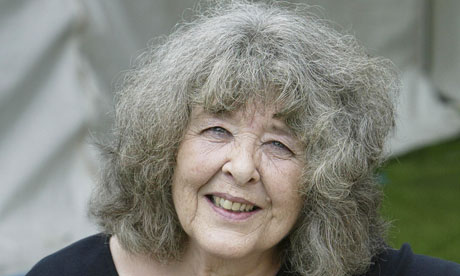
It's rare these days that I make a detour into the children's section of the bookshop. But when I do, it's usually to see if there's a new Diana Wynne Jones novel out, or if I have, mysteriously, managed to miss out on something she's written in the past. And I always make sure to check under both the Js and the Ws, just in case. So I was hugely saddened to learn of the author's death this weekend: the world of children's literature is a smaller, sadder place without her witty, warm, ingenious presence.
Rereading Wynne Jones's novels as an adult, I am invariably overwhelmed with nostalgia. They feel intricately interwoven with my childhood: the Chrestomanci books with being nine and 10 and desperate to discover that, like Cat or Christopher Chant, I had a secret but super-powerful talent for magic (was anyone else convinced that if they tried hard enough they'd be able to cast a spell?); the sublime Fire and Hemlock with that awkward,
pre-teen moment when romance becomes something desired, but never likely to actually happen (Margaret Mahy's The Changeover is another book that reminds me of this difficult, possibility-packed time of my life, and I think I'm still slightly in love with Mahy's Sorry and Wynne Jones's Tom).
I was terrified of Monigan – an old rag doll which turns out to represent an ancient and hungry goddess – in The Time of the Ghost: still am, in fact. Power of Three was another favourite; I'd stride about the moor by my cousins' home in Wales, glancing surreptitiously and hopefully around for the Dorig. And I decided that the butter-pies of A Tale of Time City (despite my previously mentioned aversion for time travel stories) beat the hot-cold goodies of The Faraway Tree for top fictional food. ("Vivian was getting very tired of being called V.S. She would have objected if she had not at that moment bitten into the butter-pie. Wonderful tastes filled her mouth, everything buttery and creamy she had ever tasted, with just a hint of toffee, and twenty other even better tastes she had never met before, all of it icy cold. It was so marvellous that she simply said quietly, 'You owe me an explanation. What were you trying to do?' 'Save Time City, of course,' Sam said juicily out of the middle of his butter-pie.")
And I think my claustrophobia may partly stem from the scene in The Magicians of Caprona – purchased with a birthday book token, so very much treasured – in which Tonino and Angelica are turned into puppets and trapped in a cardboard box by the evil duchess (although, as I've said before, Alan Garner must also shoulder some of the blame). "When Tonino came to his senses – at, incidentally, the precise moment when the enchanted book began to shrivel away – he had, at first, a nightmare feeling that he was shut in a cardboard box," writes Wynne Jones. "He rolled his head sideways on his arms. He seemed to be lying on his face on a hard but faintly furry floor. In the far distance, he could blurrily see someone else, leaning up against a wall like a doll, but he felt too queer to be very interested in that. He rolled his head around the other way and saw the panels of a wall quite near. That told him he was in a fairly long room. He rolled his head to stare down at the furry floor. It was patterned, in a pattern too big for his eyes to grasp, and he supposed it was a carpet of some kind. He shut his blurry eyes and tried to think what had happened."
I can't believe I missed Howl's Moving Castle when I was younger – our library obviously wasn't up to much. But I stumbled across it when perusing the Ws and Js in our local library last year, and was charmed by Sophie Hatter and her Howl (he probably would have been another crush if I'd read it young enough), and particularly by Calcifer. Top Diana Wynne Jones of all, though, for me, is The Lives of Christopher Chant. I read it again last year, and felt almost as excited as I did as a child when, relieved of the silver in his pockets which had been dampening his magic, Christopher lifts the roof off his tutor's house. Stirring stuff. And isn't Throgmorton the best possible name for a cat?
Looking back, I can see the influence Wynne Jones's books, burned deep into my memories when I was little, have had on my reading tastes. Discovering Christopher Chant and Chrestomanci for the first time made me realise just how good fiction could be, and I think she sowed the seeds for my future love of fantasy. I adore the work of a lot of children's authors, and I tend to bang on about it a fair bit. But Diana Wynne Jones stands out from the crowd, for her humour, her originality and her touching, clever, rollickingly good stories – she's 10 times the writer JK Rowling or Stephenie Meyer ever will be, and I'm astonished to discover that, until Harry Potter took off and publishers realised how successful children's fantasy could be, many of her books were out of print.
At least they're widely available now. And it turns out, studying her bibliography, I've still got some left to read. The Dalemark quartet, here I come. And Diana, here's to you: to your sudden wild magic and to the books you've left behind. May they never go unread.

